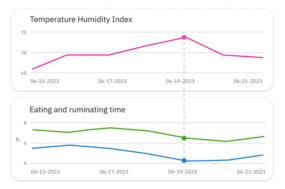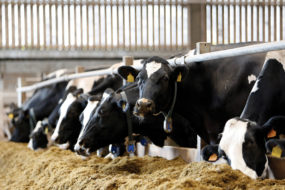The early 18th century saw a social upheaval in England. Historians estimate that half of the population depended in part upon charity to survive. A class war was very much in place. Early in that century, Parliament legislated capital punishment for servants who stole. At the same time, some rich were themselves into theft.
In 1732 the Charitable Corporation and Derwentwater Trust scandals broke. In the first, public trustees had used their positions over funds intended for the employment and relief of the poor to line their own pockets. In the case of the Derwentwater Trust, public property intended to be used for the public interest was plundered by those in charge.
It was also a time of great English writers. Defoe ( Robinson Crusoe ) and Swift ( Gulliver’s Travels ) wrote during the period, as did Samuel Johnson. Among those writers was an Irish clergyman by the name of Samuel Madden. His books on the plight of the poor were not noteworthy, but his use of the “future” was. In 1733 he published Memoirs of the Twentieth Century . His book claimed that it contained “original letters of state, under George the Sixth: relating to the most important events in Great-Britain and Europe, as to church and state, arts and sciences, trade, taxes, and treaties, peace, and war: and characters of the greatest persons of those times; from the middle of the 18th, to the end of the 20th century, and the world.” Using documents written 200 years in the future, Madden sought to show how the conditions and policies of his time would fully develop in future generations.
Only a few manuscripts of the first volume survived. (The remaining five were never published.) For reasons unknown, Madden himself took steps to gather as many as were published and burned them. But some survived, and the book is available today. (I do not recommend except for the literary historian.) Its claim to fame is not the content but how it was written. It is the first-known novel in history that pretended to write of things in the future. In this case, people did not travel in time machines; instead, documents from the future were made available.
In 1763 he published another futuristic novel, The Reign of George VI, 1900 to 1925 . He describes this future king as “a very great King, and a truly good man.” At the same time he notes that he is unaware of any contemporary that meets such standards.
This type of satire or commentary uses a description of the future as a form of persuasion to those of the present to change their ways. A hundred years later, Charles Dickens used the technique, with people this time, in A Christmas Carol , where Scrooge saw his future unless he changed his present. Rare then, the technique is today a common theme in science fiction books, TV shows and movies.
The now-ended TV series, Early Edition , followed Gary Hobson, who had the unusual fortune to receive a newspaper today with tomorrow’s headlines. The show began each morning with its delivery accompanied by a cat. One or more news items would catch him as being horrific and worthy of stopping. The show progressed as he took steps to stop the terrible things from happening. Success came when the horrific headlines of the paper morphed in his hands to more innocuous or innocent stories.
All of these stories or plays are, of course, fictional. But they play on our sense of “what if.” We commonly express the same thing when we say, “If I only knew then what I know now, then I would have…” But, alas, we did not know, and life did change. Many a dairy farmer expressed the same sentiment at the close of 2009 – “If only we had known!”
Despite the natural limitations against time travel and clairvoyance, there are forecasts. Based upon computer-generated models and past experiences, our government does some of that. In its monthly World Agricultural Supply and Demand Estimates, the USDA projects supply, demand, prices for the next month and a year later. These are available online at http://future.aae.wisc.edu/wasde.htm. Each month the USDA prints summaries of this in Dairy Market News. Because we can look back at forecasts for today, we can judge their accuracy. For example, in February 2009, the USDA forecasted that the average all-milk price for 2009 would be $15.75. It was $12.81. If only we had known. In October 2008 it projected an average all-milk price for September 2009 in the range of $18.35 plus or minus 50 cents and for October $16.95 plus or minus 45 cents. The all-milk price for those months were $12.90 and $14.20. As late as December 2008, after the bank failures and the tanking of the economy, the USDA estimated prices for the following November and December to be $15.75 and $15.35, give or take 40 cents or so. They were $15.30 and $16.50, respectively. If only we had known. Prices are volatile, but production is more constant. Even so, the same report estimated milk production in the U.S. for 2009 through December to be 191.4 billion pounds. Actual production was 189.3 billion.
In all fairness to the USDA, the people who make these projections know that they are not going to be exact on the numbers. At the end of these monthly reports they compare their projections to actual results. For December, the USDA has averaged a 1.3 percent difference in production projected versus actual for more than 25 years. But its extremes have shown it to be too low by 6.1 billion pounds and too high by 5.7 billion pounds. In other words, the USDA has told us that next year’s production is within, give or take, the annual production in the State of Washington.
The USDA is not the only organization that makes forecasts. Penn State University, the University of Wisconsin and other state institutions report monthly dairy outlooks. Milk commodity brokers use their own forecasts to assist their customers in making futures buying and selling decisions. Dairy and milk companies, cooperatives and producers, too, do some forecasting. None of them have consistently been right.
Not only do individuals fail, but the market as a whole fails to accurately predict the future. Using the combined wisdom of hundreds of dairy experts and through thousands of individual transactions, buyers and sellers trade in futures. These decisions are based upon their forecast as to where they see the markets going. Even all of that wisdom misses. For example, at the close of the 2008 year, Class III futures for the first six months of 2009 averaged $11.77; the actual average was $10.19. A month earlier, the average for those months was $14.25. If only we had known.
We do not, nor can we ever, know the future until it becomes the present. That does not stop those who wish to impose upon dairy farmers today limitations for the sole purpose of changing the future as they see it. After all, every proposed growth management program requires that someone know with some certainty what the supply and demand for milk will be a year into the future. Without knowing this future, there can be no sensible or workable program. But where does this knowledge come from?
The proponents argue that a group (generally a dozen) of government-appointed dairy farmers will know or will be able to learn the future. The reality is that in the guise of USDA outlook reports they will come up with some numbers and declare with government approval that “this is the future.” With this USDA-sanctioned future, the committee will then dictate to dairy farmers how much milk they can produce. The USDA will then use the force of a federal law, government officials and courts to make sure dairy farmers comply. In some years the “allowable growth” will be modest amounts but in some years, such as 2009 would have been, producers will be required to reduce production. Every producer will be obligated to limit their production. Those who do not will pay crippling government milk taxes and fines.
Today none of the proponents of these plans are announcing each month or quarter what their projected imbalance for the next year would be and, in response, what the allowable growth rate, or reduction, would be. This evidences the fact that the underlying mechanism necessary for such a program does not exist. No clairvoyant cat is going to deliver future issues of Dairy Market News.
These programs also rely on another unrealistic proposition – controlling only milk production, and nothing else, will by itself, stabilize prices and result in dairy profitability. It reminds me of another supernatural tale of the farmer who complained that his crops never got enough rain. In a burst of anger he shouted to God, “You can’t get it right!” To his surprise and delight, God said, “Fine, take this bell. Every time you want rain, ring the bell. When you want it to stop, ring the bell.”
Excited with newfound power, the farmer dutifully rang the rain on and off throughout the season. At the end of the year his yields were miserable; temperatures were too cool. So God let him set the temperatures and the rain. A year went by and still very low yields. This time it was the wind. The next year it was the amount of sunlight, then it was the pests and insects were not killed off in winter frosts, and so on and so forth.
Finally, destitute, defeated and downcast, he returned all of the power to God, saying, “I thought it was all so simple.” But that tale is like Madden’s novels, or Scrooge with Christmas Future or Gary Hobson in Chicago chasing down a would-be disaster – they are all fictional. We can close the book, turn off the TV and life does not change.
Once turned on, we cannot turn off the government. The programs for central government control of dairy farmers’ production would not be fictional if passed. Its failures will fall upon dairy farmers throughout this country. And when it does fail, and it would eventually, there is no travelling back to the day before it all began. PD

-
Ben Yale
- Attorney
- Yale Law Offices
- Email Ben Yale






